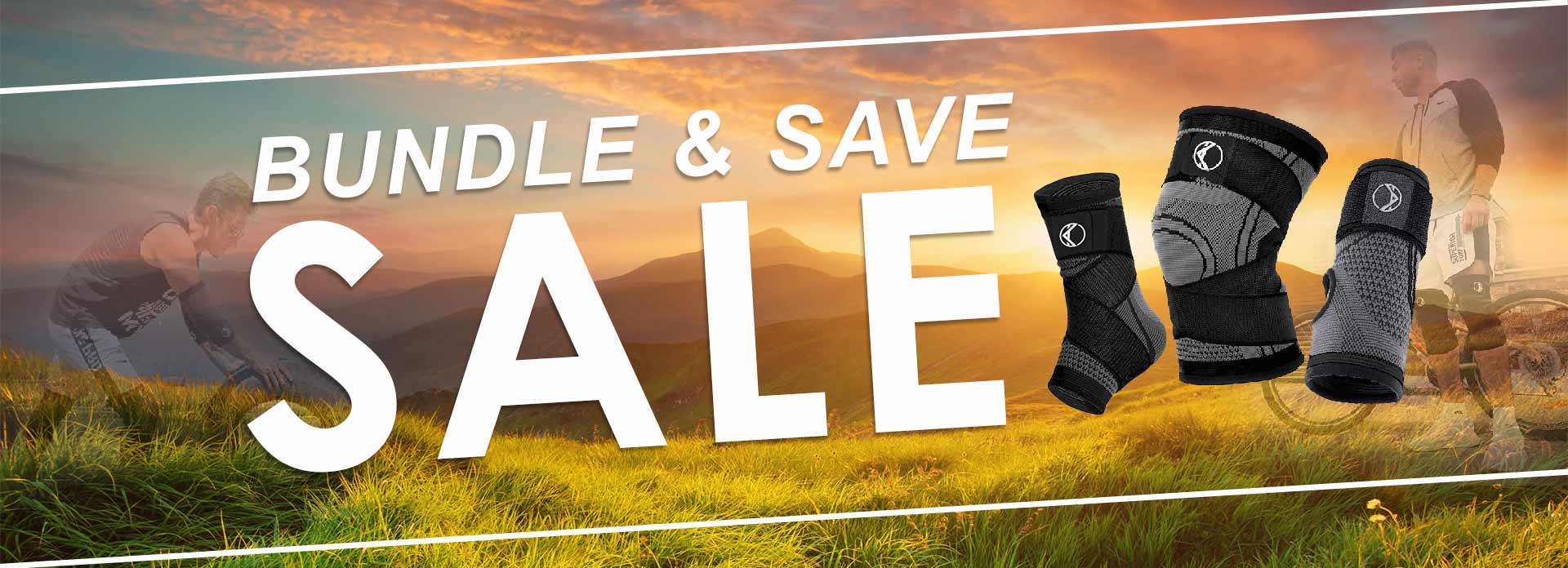
Hiking Compression Socks: Benefits, Tips & Uses
June 19, 2023 | 4 Mins Read
TABLE OF CONTENTS
1. How Compression Socks Enhance Performance on the Trails?
2. Benefits of Compression Socks for Hiking: Is There Any Evidence?
3. Preventing Common Hiking Injuries with Compression Socks
3.How Long Should You Wear Compression Socks for Hiking?
4. Finding the Best Compression Socks for Hiking
5. Step-by-Step Guide to Ensure the Perfect Fit of Your Compression Socks for Hiking
Hiking is an exhilarating outdoor activity that allows individuals to connect with nature while challenging their physical abilities. However, it's essential to take care of your feet during hiking adventures to ensure optimal performance and prevent injuries.
One way to achieve this is by wearing compression socks specifically designed for hiking. In this article, we will delve into the advantages of compression socks for hiking, so you can make an informed decision on how to protect your feet.

Frequently, hikers focus on footwear. Nevertheless, hiking compression socks deserve equal attention. They snugly wrap your feet and calves. Consequently, they boost circulation and diminish fatigue.
Compression socks are beneficial for hiking as they help improve blood flow and prevent leg disorders. About 90% of leg disorders originate within the veins, making compression socks particularly useful for addressing venous problems.
When worn, these socks gently squeeze the legs, increasing pressure in the tissues and reducing fluid leakage from capillaries. This promotes better absorption of tissue fluid by capillaries and lymphatic vessels, resulting in reduced swelling and prevention of further swelling.
Additionally, compression socks limit the expansion of superficial veins, preventing blood from flowing backward and causing congestion. By enhancing circulation and preventing issues like blood pooling and clotting, compression socks can provide comfort and support during hiking activities.
Compression socks provide a multitude of benefits to hikers looking to maximize their performance. From improved circulatory health to enhanced muscle support, these specialized socks can make all the difference in achieving superior hiking results. Here are some of the main advantages that compression socks offer:
One of the primary benefits of wearing compression socks during hiking is enhanced blood circulation. Compression socks apply pressure to the lower legs, helping to improve blood flow back to the heart. This can be particularly beneficial in preventing the legs from swelling during long hikes.
Various studies, including one published in the Journal of Strength and Conditioning Research in 2019, have suggested that wearing compression garments can improve blood circulation. This may subsequently help in reducing muscle soreness and promoting recovery.
A 2020 study showed that wearing below-knee compression socks during exercise improved performance in some cases. Additionally, there is evidence supporting the use of compression socks for reducing muscle fatigue and soreness after exercise, leading to better recovery within 48 hours.
These findings suggest that the compression therapy from compression socks can be beneficial for hikers looking to improve their performance.

Compression socks can be instrumental in preventing common hiking-related injuries, providing hikers with added protection and support. Here's how compression socks can help in preventing specific injuries:
Wearing compression socks during the hike is where they serve their primary purpose. They help in improving blood circulation, reducing muscle fatigue, and preventing blisters. For day hikes that last a few hours to an entire day, it’s advisable to wear compression socks throughout the duration of the hike.
Post-hike, compression socks can also be beneficial. They can help reduce muscle soreness and expedite recovery.
It is important to note that wearing the same pair of compression socks multiple times without washing them should be avoided. Over time, dirt and bacteria can accumulate, potentially leading to hygiene issues and reduced effectiveness.
Read here for a more detailed information on how long should you wear compression socks.
When looking for the best compression socks for hiking, there are several factors to consider to ensure you choose the right ones for your needs. Here's a guide to help you make an informed decision:
Compression socks come in different compression levels, typically measured in millimeters of mercury (mmHg). For hiking, a moderate compression level between 15-20 mmHg is generally recommended. This level provides adequate support and improves circulation without being overly restrictive.
Those with specific medical conditions or who are going on particularly long and strenuous hikes might benefit from 20-40 mmHg level of compression.
A good hiking compression sock should have efficient moisture-wicking properties. This means it draws sweat away from your skin to the outer layer of the sock, where it can evaporate. Keeping your feet dry is critical for preventing blisters, fungal infections, and discomfort. Materials like merino wool and certain synthetic fabrics excel at moisture management.
Ensure that you measure your calf circumference and consult the sizing chart provided by the manufacturer. The socks should be snug but not excessively tight, allowing for proper compression and blood flow without discomfort.
Hiking compression socks come in various thickness levels, from ultra-lightweight to heavy cushioning. The right choice depends on your personal preference, the type of footwear you're using, and the weather conditions. Thicker socks provide more cushioning and are ideal for colder climates, but they might be too hot or bulky for summer hikes or lightweight shoes.
Breathability is another crucial factor to consider. Hiking often involves physical exertion, which means you'll likely be sweating. Breathable materials allow air to circulate around your feet, helping to wick away moisture and reduce the likelihood of blisters and fungal infections.
Hiking puts a lot of stress on your ankles and heel area. Consider socks that offer additional cushioning and padding in key areas such as the heel, sole, and ball of the foot. This can be especially useful in hiking, where these areas are prone to impact and pressure. Cushioning can help to alleviate soreness and provide additional comfort on the trails.
Look for compression socks with graduated compression, meaning the pressure is highest at the ankle and gradually decreases towards the calf. This design promotes better blood circulation and helps prevent swelling and fatigue during hiking.
Hiking can put a strain on the arches and ankles. Opt for compression socks that offer reinforced support in these areas to provide stability and minimize the risk of injuries such as plantar fasciitis and ankle sprains.
Your hiking boots matter too. With compression socks, opt for a slightly roomier fit. That ensures your feet have enough space. Moreover, it accommodates the sock’s thickness.
Consider the durability of the socks. Look for reinforced stitching and high-quality materials that can withstand the rigors of hiking and maintain their compression over time.
To ensure the perfect fit for your compression socks and maximize their comfort and effectiveness, follow this step-by-step guide:
Taking proper care of your compression socks for hiking is essential to maximize their durability and effectiveness. Here are some guidelines for cleaning, storing, and recognizing signs of wear:
Expert tip:
It's best to air dry your compression socks before putting them in a bag after your hiking activity. This prevents bacteria and other germs from forming in the fibers.
Remember, different brands or materials may have specific care instructions, so always refer to the guidelines provided by the manufacturer.
Discover the ultimate hiking companion with Koprez® compression socks! Designed specifically for outdoor enthusiasts, our compression socks provide the perfect blend of support, comfort, and durability. Engineered with high-quality materials and reinforced stitching, these socks are designed to keep up with your active lifestyle.
Whether you're conquering rugged trails or enjoying leisurely hikes, Koprez® compression socks are your trusted partner for unparalleled performance and comfort. Upgrade your hiking experience and reach new heights with Koprez®! Get your pair today for an unbeatable experience in comfort and performance!






References
Author

Claire Evans worked as the content marketing manager at Koprez. Claire combined a background of writing and editing, marketing, and patient education to best serve consumers, fitness enthusiasts, athletes, and anyone who relies on the Koprez brand for helpful information.
Koprez® Featured Products